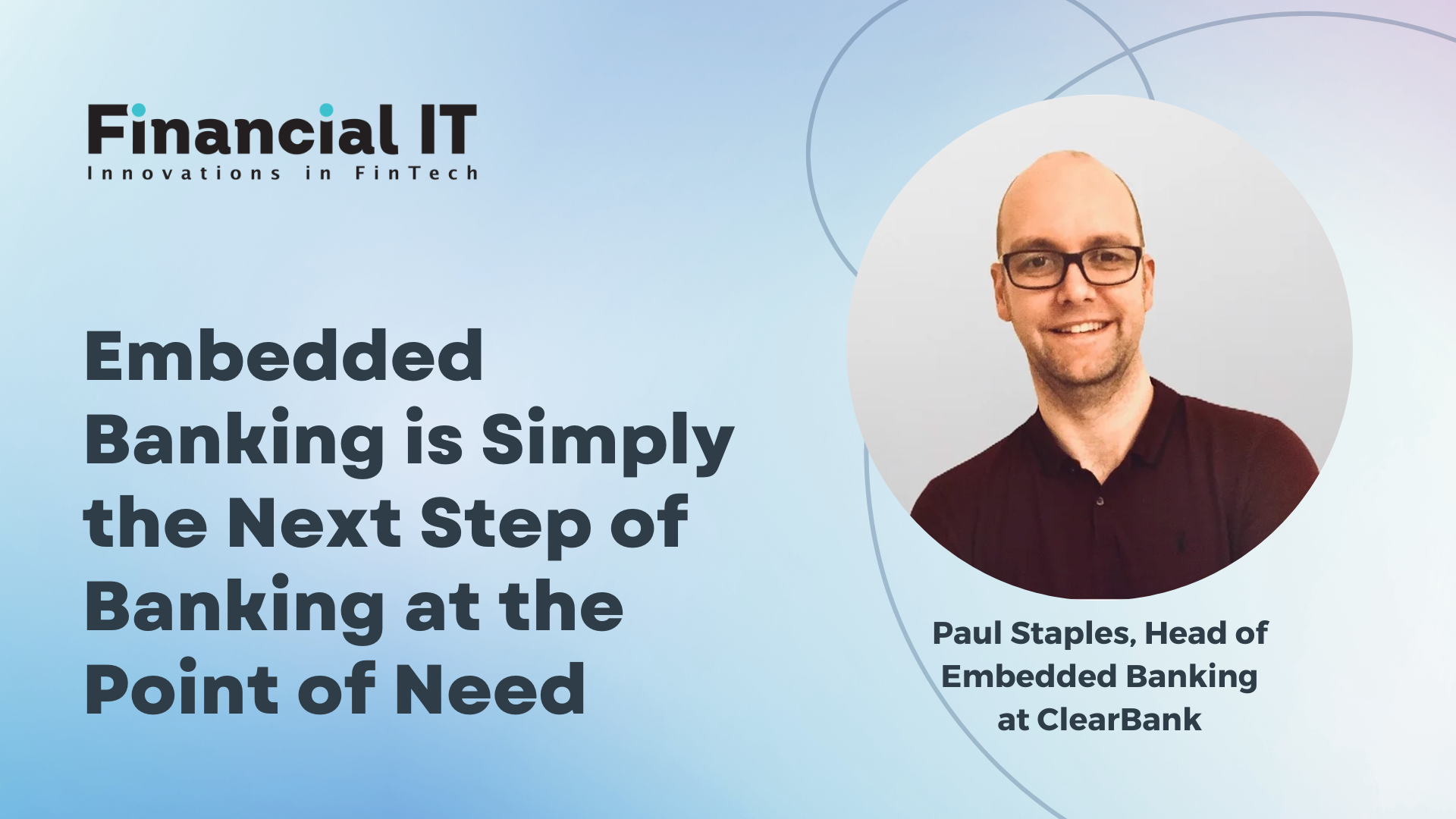Embedded Banking is Simply the Next Step of Banking at the Point of Need

- Paul Staples, Head of Embedded Banking at ClearBank
- 03.07.2024 11:00 am #EmbeddedBanking
It’s been thirty years since Bill Gates declared that “banking is necessary, banks are not”. There was some truth in what he said—banks are still around, but have changed in radical ways over the last two decades, responding to the technological change that prompted this statement.
Banking has always been about necessity. The money exchangers ejected from the temple in the New Testament were likely there as worshippers needed a specific coin to pay a temple tax. The Bank of England was founded out of necessity when goldsmith banks, still sore from Charles II’s unpaid debts, declined to fund his wars with France. High street banks, and the ATMs that have replaced them, are there because that’s where people need them.
We can see how shifting needs have led to banks changing in the last few years. Banks have been criticised for closing branches, but it’s true that they are much less used than they once were. According to UK Finance, in 2017, the average bank branch received 140 visits a day, compared with 104 in 2021, whereas two-thirds of UK adults used online banking and over half used mobile banking in 2020. Putting aside the problems of closing a local branch for those who depend on the service, it makes economic sense to invest in banking where people are using it: at the point of need.
Embedding at the point of need
This idea of taking banking and putting it at the point of need holds true whether we’re talking about temples, high streets, or mobile apps. Embedded banking services are part of everyday life for many, whether they know it or not—wealth management apps where someone can make an instant transfer rely on embedded banking, as do buy-now-pay-later deals available for many online transactions. Embedded banking makes these services simple for the consumer and provider.
The availability of these services at the point of need is important to the future of embedded banking. Some have sold the concept with the ability to provide branded services, or the idea that “anyone can be a fintech”. But the evidence that people want bank accounts branded with their favourite brands is weak, at best. Yes, a brand can offer a credit card. Yes, a business can offer a bank account. But should they? This question needs to be answered first. Embedded banking is not a technology in search of a use case. Embedding banking services should come from a determined need.
This is not to say there is never a need for branded banking services or for non-financial businesses to operate like fintechs. People may well want a credit card from their favourite sneaker brand, and embedded bank accounts can be incredibly beneficial for many types of business. But by thinking beyond customer-centric products, we can unlock far more potential from embedded banking.
Finding hidden needs
If a massive multinational corporation owned a bank, what efficiencies could it achieve? The bank’s operations could be tailored to the corporation’s needs and set up in the way that makes the most sense.
This is the promise of embedding banking infrastructure within large businesses. A full-stack enterprise-grade embedded banking platform with direct connections to UK payment schemes can help businesses do more than offer bank accounts to customers. A banking platform operated by businesses can build efficiency in their operations, de-risk cashflow, orchestrate complex payment flows, and more.
This is especially true of businesses that work across borders, or are distributed widely—health organisations, or energy giants are good examples. Embedding banking infrastructure in their day-to-day operations makes sense to simplify the flow of complex internal flows of money. Energy companies buy and sell on a constantly shifting energy market, where even small efficiencies may make a difference. It could also help pay microgeneration providers quickly, keep these smaller businesses healthy, and help meet sustainability targets.
Of course, this doesn’t exclude embedded banking services for external customers and suppliers—in fact, having banking services embedded internally may make external facing services make more sense. For health providers, the orchestration of insurance and other payments, and paying out to specialist providers, could be supplemented by the use of embedded bank accounts or wallets to make this simple.
We are, effectively, in the “third wave” of embedded banking. The first was consumer- and marketing-focused, co-branding cards and banking services to give them a certain cachet or “cool”. The second wave can be seen in brands such as Toast, which brings financial services directly to a specialist restaurant SaaS system. The third wave will not wash away the first two but augment them—it will integrate multiple financial products that solve business needs, without necessarily offering an external product, but not excluding them either.
The third wave of embedded banking is about bringing banking to the point of need, wherever that point of need is within a business. In one way, nothing will change—it’s still all about banking as a necessity to conduct business. But at the same time, it has the potential to dramatically improve operating models as businesses find new advantages to embedded banking infrastructure. Arguably the challenge now isn’t the what or the how, but where can embedded banking make the biggest difference.



















